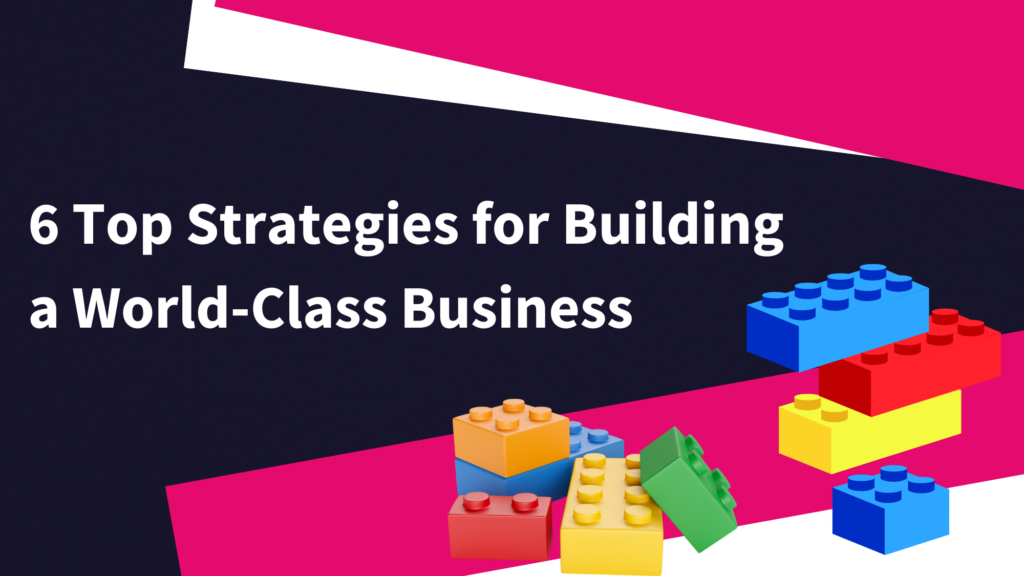Ever paused to wonder, “Why did I just buy that?” Well, it’s not always about the product; sometimes, it’s about the science behind the sell. In the bustling world of Direct-to-Consumer (D2C) e-commerce, understanding what makes your customer click ‘buy’ can be the game-changer.
In a cracking chat with Kyle Hoffman, I unravelled how behavioural science is shaping the way D2C brands interact with us, online shoppers. Curious about how it’s revolutionising the e-commerce scene? Fancy learning a few tricks to get inside the heads of your customers? Let’s dive in and get those answers.
Why is Understanding Consumer Behaviour so Important for D2C Brands?
Ever asked yourself, “What sets apart D2C from regular e-commerce?” Well, here’s a hint: it’s all about the relationship.
The D2C and Traditional E-commerce Tango
Unlike your typical e-commerce platforms, which often feel like vast marketplaces, D2C brands are more like that friendly neighbourhood shopkeeper – they know what you fancy before you even step in. The essence of D2C is creating products with a distinct personality, directly selling them without third-party interferences.
The Power of a Direct Connection
With D2C, brands aren’t just making a sale; they’re making a connection. In a world where we’re swamped with choices, that direct, personalised relationship can be the difference between a one-time purchase and a loyal customer. The secret sauce? Understanding the nitty-gritty of consumer behaviour. When D2C brands get this right, it’s like they’re reading our minds, offering us exactly what we need, when we need it.
What’s All the Buzz About Behavioural Science in E-commerce?
Ever paused mid-scroll to ask, “Why did I just click on that product?” or “Why did that ad resonate so much with me?” The answer, more often than not, lies in behavioural science.
Unpacking the Principles of Behavioural Science
At its core, behavioural science delves into why we humans behave the way we do, especially when it comes to spending our hard-earned money. It’s a blend of our emotions, perceptions, and past experiences, all coming together, nudging our purchasing choices in subtle ways.
Brands Nailing the Behavioural Science Game
But it’s not just about understanding the science, it’s about applying it. Take a stroll down memory lane and think of those brands that have made you feel seen. Maybe it was a perfectly timed ad or a product that seemed like it was made just for you. Brands like Guinness, as mentioned in the podcast, have tapped into these behavioural nuances, turning perceived weaknesses into strengths. When e-commerce brands blend their strategy with behavioural science insights, the results can be truly transformative.
The Pratfall Effect: How Flaws Can Be Your Brand’s Best Friend
You’ve heard it before, “Nobody’s perfect”. But in the world of D2C e-commerce, could that actually be a good thing?
Delving into the Pratfall Effect
At the heart of the Pratfall Effect is a behavioural science principle that might sound counterintuitive at first glance: people are often more endeared to those (or in this case, brands) that showcase their imperfections. It’s not about flaunting massive flaws but rather about humanising your brand, making it relatable and authentic.
From Slow Pours to Memorable Moments: The Guinness Story
A pint of Guinness is a treat for many, but did you know about its once-perceived drawback? The time it took for that dark, delightful brew to be poured was often longer than other beverages. Instead of seeing it as a setback, Guinness brilliantly spun it into a selling point: “Good things come to those who wait”. It wasn’t just about the wait; it was about the worth of the wait.
Turning the Spotlight onto D2C Brands
So, for emerging and established D2C brands out there, the message is clear: embrace your unique quirks. Whether it’s an unconventional product design, a peculiar brand story, or even a flaw that can be turned into a strength, the Pratfall Effect reminds us that authenticity often shines brightest through the imperfections.
Choice Paralysis: When Giving Less Equals Gaining More
We’ve all been there – staring at a menu, struggling to decide because there’s just too much to choose from. That indecisiveness, that hesitation? It’s not just you. It’s a universal psychological phenomenon, and it’s got a name.
Breaking Down Choice Paralysis
In a nutshell, choice paralysis describes the overwhelming feeling consumers get when faced with too many options. While variety might sound like a selling point, it can actually hinder decision-making processes and even lead to lost sales.
Brands That Nailed the ‘Less is More’ Approach
A few trailblazers recognised this predicament early on. Take Apple, for example. Their product lines are notably limited compared to competitors. By offering fewer choices, they’ve streamlined the decision-making process, making it simpler for consumers to commit.
Another great instance? High-end restaurants offering tasting menus. By curating a set dining experience, they eliminate the fuss of choice, turning meal selection into a breeze.
Guidelines for D2C Brands: Simplifying the Selection
For D2C brands aiming to enhance conversions, here are a few takeaways:
- Limit Variations: If you have a product that comes in 20 colours, consider if all those choices are necessary.
- Curated Collections: Bundle complementary products together, offering packages that remove the guesswork.
- Highlight Bestsellers: Direct attention to top-rated or best-selling items, simplifying the decision for new customers.
Remember, it’s about striking a balance – give customers a choice, but not so much that they’re left dithering at the crossroads of decision.
Social Proof & Influencer Collaborations: The Secret Sauce of D2C Success?
Ever wondered why you’re more likely to buy something if you know others have, or if a celebrity you admire endorses it? Welcome to the powerful world of social proof and influencer collaborations!
Demystifying Social Proof in E-commerce
At its core, social proof is the idea that we look to others to guide our decisions, especially when we’re unsure. In the vast ocean of online shopping, seeing positive reviews, ratings, or trusted figures endorsing a product can act as a reassuring nudge that says, “Go on, it’s a good choice.”
Influencer Collaborations: More Than Just Hype
While some might dismiss influencer marketing as mere trend chasing, the numbers tell a different story. Collaborations with influencers, especially those who genuinely resonate with their audience, have propelled many D2C brands into the limelight. It’s not just about the promotion; it’s about trust. When a respected influencer gives their nod of approval, it carries weight.
Harnessing Social Proof: Steps for D2C Brands
For those D2C brands ready to dip their toes into the waters of social proof, here are some pointers:
- Gather & Showcase Reviews: Regularly solicit reviews from satisfied customers and make sure they’re visible on your product pages.
- Collaborate Wisely: Don’t just partner with any influencer; choose those who align with your brand values and appeal to your target demographic.
- User-Generated Content: Encourage and share content created by your customers. This authentic touch often resonates more than polished brand campaigns.
In essence, while quality and innovation drive D2C brands, the added layer of social proof and smart influencer collaborations can be the cherry on top that nudges consumers to hit ‘buy’.
Maximising Sales with Quantity Limitations: The Clever Nudge D2C Brands Need?
There’s something inherently enticing about the word “limited.” Whether it’s a limited-time offer, a limited stock alert, or a restriction on how much you can buy, this tiny word wields significant power in the e-commerce realm. But why?
The Intriguing Psychology Behind Limited Quantities
It’s a classic play on the ‘fear of missing out’ (FOMO). When something is scarce, our brains are wired to perceive it as more valuable. This scarcity principle stems from our basic survival instincts; when resources are scarce, we’re more driven to acquire them. In the e-commerce landscape, this translates to higher perceived value and a prompt to purchase.
Kyle Hoffman’s Wisdom on Setting Purchase Ceilings
In our recent chat with Kyle Hoffman, he shared a fascinating insight. By setting a limit on the number of items a consumer can purchase, not only do you create urgency, but you also cultivate exclusivity. The consumer thinks, “If there’s a maximum limit, it must be in high demand.” It’s a subtle nudge, encouraging them to grab the opportunity before it slips away.
Striking the Balance: Scarcity without Alienation
For D2C brands looking to leverage this strategy, here are a few words of caution and advice:
- Be Genuine: If you’re promoting a limited stock or time-sensitive offer, ensure it’s genuine. Customers can spot fake urgency from a mile away.
- Communicate Clearly: Make sure customers understand any purchase restrictions and the reasons behind them. It might be due to high demand, ensuring all customers get a fair shot, or preserving stock.
- Reassure and Reward: If customers missed out on an offer, ensure there’s a follow-up, maybe a secondary offer or early access next time. This keeps goodwill intact.
In essence, while quantity limitations can be a powerful tool to boost sales, it’s crucial to implement them thoughtfully, ensuring customers feel valued, not manipulated.
Testing and Iteration: The Heartbeat of Behavioural Science in E-commerce
It’s often said that in the world of digital marketing and e-commerce, if you’re not testing, you’re guessing. But when it comes to the application of behavioural science in e-commerce, this sentiment holds even greater weight. Here’s why.
Why Established Studies Aren’t Enough
Established behavioural science studies offer a treasure trove of insights, revealing how consumers typically think, feel, and act. They provide foundational knowledge that’s invaluable. However, while they paint a broad picture, they may not always capture the unique nuances of individual brands or their specific customer base. What works for a global brand with a diverse audience might not resonate with a niche D2C brand catering to a specific demographic.
The Power of Personalised Testing
Personalised testing isn’t just about ensuring that a behavioural science principle works for your brand—it’s about fine-tuning it for optimal results. By running your own tests, you’re tailoring the approach to your audience’s specific behaviour, preferences, and pain points. In a way, you’re speaking directly to them.
Steps to Implement Effective Testing:
- Start Small: Don’t overhaul your entire e-commerce strategy. Instead, tweak one element at a time based on a behavioural science principle.
- Gather Data: Use tools and analytics to gather data on how your audience responds to the change.
- Analyse and Iterate: Did the change increase conversions? If yes, fantastic! If not, why? Delve deep, identify the gaps, and iterate.
Remember: Behavioural science isn’t a static field. It’s ever-evolving, and so are consumer behaviours. By continuously testing and iterating, brands ensure that they’re not just keeping pace with these changes, but are also a step ahead, crafting experiences that truly resonate.
Conclusion
In the bustling arena of e-commerce, where brands compete fiercely for a slice of consumer attention, integrating behavioural science into D2C strategies isn’t just an option—it’s a necessity. As we’ve unravelled throughout this deep dive, understanding the intricacies of human behaviour can be the difference between a ‘passing glance’ and a ‘confirmed purchase’.
But remember, it’s not about blindly adopting every behavioural science principle out there. It’s about discerning which principles resonate with your brand ethos, align with your offerings, and most importantly, strike a chord with your unique audience.
The world of consumer behaviour is vast, complex, and ever-changing. Embrace it. Dive into it. Test, iterate, and refine. In doing so, you’re not just selling a product—you’re crafting experiences, forging connections, and building lasting relationships.
To all D2C brands out there: Be bold. Be experimental. And let the nuances of behavioural science guide you to e-commerce success.
FAQ’s
-
What is D2C e-commerce?
D2C (Direct-to-Consumer) e-commerce refers to a business model where brands sell their products directly to consumers, bypassing traditional retailers or intermediaries. This approach allows brands to have a direct relationship with their customers, offering more personalised experiences and tailored marketing strategies.
-
How does behavioural science impact shopping habits?
Behavioural science delves into the understanding of human actions and the underlying motivations behind these actions. In the realm of shopping, behavioural science principles can shed light on how consumers make purchase decisions, why certain products resonate more than others, and what triggers can incentivise a sale. By tapping into these insights, brands can craft strategies that align closely with consumers’ inherent behaviours and preferences.
-
Why is social proof effective in online sales?
Social proof is the phenomenon where people mirror the actions and beliefs of others, especially in uncertain situations. In the context of online sales, showcasing reviews, testimonials, or popular products can provide a sense of validation for potential buyers. If others are purchasing and appreciating a product, it often gives new customers the confidence to do the same.
-
How can D2C brands reduce choice paralysis for consumers?
Choice paralysis occurs when consumers are presented with too many options, leading them to feel overwhelmed and often opting out of making a decision altogether. D2C brands can combat this by simplifying product choices, curating selections, or offering guided shopping experiences. Essentially, it’s about streamlining the buying process and making it as effortless as possible for the consumer.
-
What is the pratfall effect and how can brands leverage it?
The pratfall effect is a behavioural science principle that suggests brands or individuals can become more relatable and authentic by showcasing their imperfections. It’s rooted in the idea that no one, including brands, is perfect. By highlighting certain weaknesses or imperfections (and in some cases turning them into strengths), brands can connect more deeply with their audience, building trust and authenticity. For instance, a brand might openly discuss a product limitation and then position it as a unique selling point, much like Guinness did with its ‘worth the wait’ campaign.







